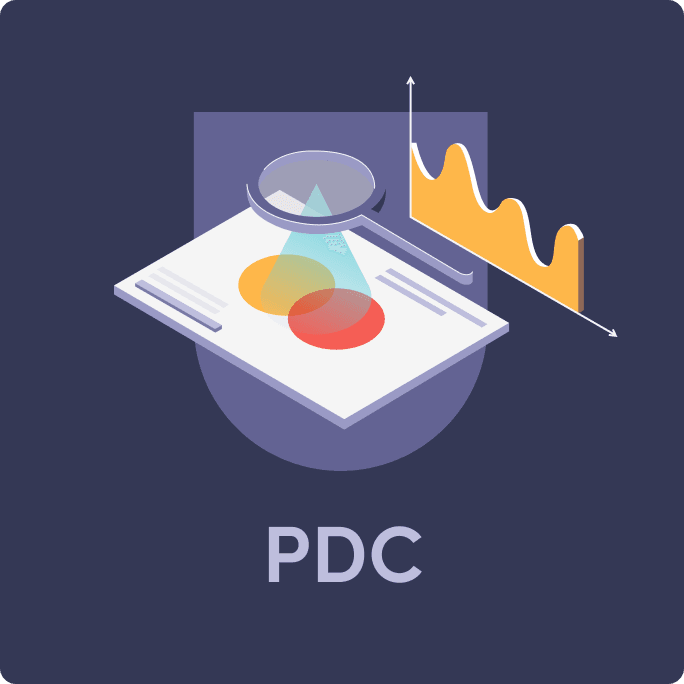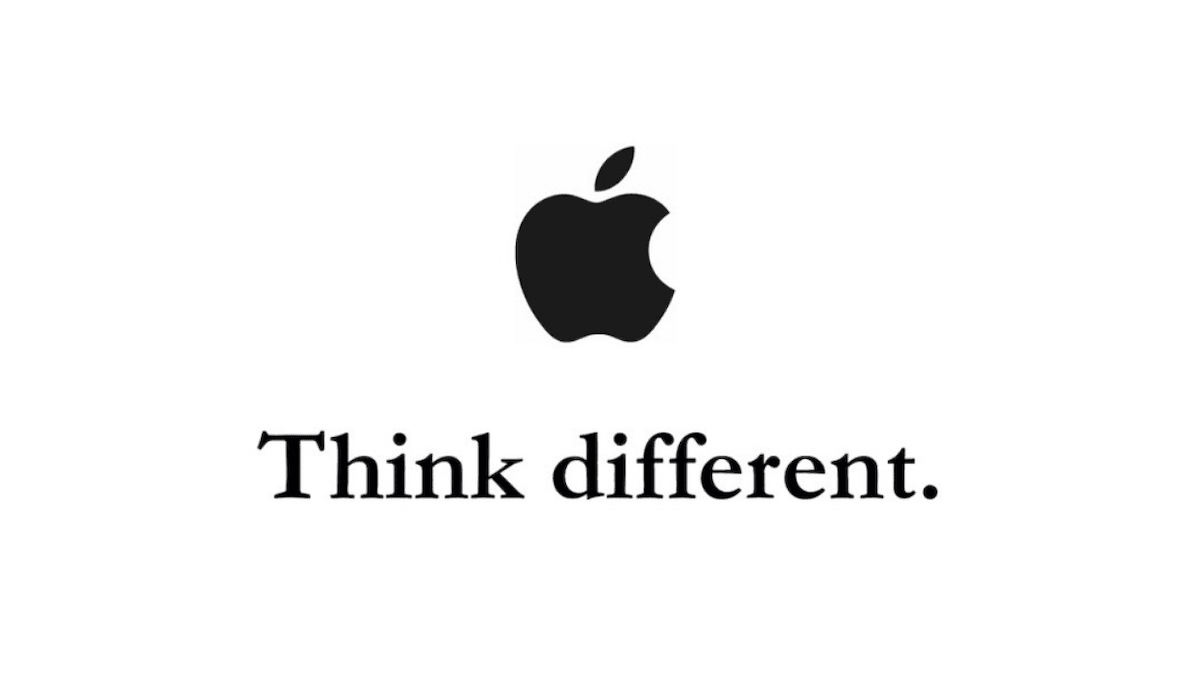Updated: September 16, 2024- 23 min read
Market positioning is the primary reason why the release of the first iPhone was so iconic. Three familiar devices that people cared about — an iPod, a phone, and an internet communicator — all merged into one.
— Mariana Abdala, VP of Product at Product School
In 2007, Steve Jobs walked onto the stage and made history with a single sentence: “Today, Apple is going to reinvent the phone.” But what made this launch truly revolutionary wasn’t just the technology; it was how Apple positioned the iPhone in the market.
Jobs knew that the key to success wasn’t simply creating a new phone. The world already had phones.
What he saw was an opportunity to solve a deeper problem — how to seamlessly integrate music, communication, and the internet into a single device. By tapping into people’s familiarity with iPods, phones, and computers, Jobs didn’t just introduce a product — he redefined what a phone could be.
Apple’s product positioning turned a sleek piece of technology into a cultural icon.
This shows the power of aligning a product with customer needs, shaping its perception, and daring to play with positioning. Now, let's dive into what product positioning is, why it matters, and how to do it right.
Product Discovery Micro-Certification (PDC)
Master the art of product discovery! Learn how to identify real user problems, validate solutions, and ensure your product truly resonates with its target audience.
Enroll for free
What Is Product Positioning?
Product positioning is about defining why a product or service is valuable to a specific audience. It gives context for how to market and sell the product effectively and helps ensure all decisions are aligned to create a consistent and successful customer experience.
Think of it like opening a restaurant. The location, menu, pricing, and overall vibe all contribute to how it's positioned. If you aim to create a high-end dining experience, you’d choose an upscale location and set the prices and ambiance to match.
In product marketing, positioning works similarly. It helps highlight the key benefits of a product for the right audience and ensures every step taken—whether in development or marketing—supports the growth of that product.
For example, Tesla positions its cars as not just electric vehicles, but as cutting-edge, eco-friendly, luxury cars. By emphasizing innovation, advanced technology, and sustainability, Tesla appeals to customers who value both high performance and environmental responsibility. This clear positioning has helped them dominate the electric car market while differentiating themselves from traditional automakers.
Why Is Product Marketing Positioning so Important?
Product positioning is crucial because it defines how a product is perceived in the market. It has a direct impact on its success. Without a well-thought-out positioning strategy, even a great product can struggle to find its audience or stand out among competitors.
First, (1) positioning helps clarify the unique value a product offers.
It ensures that customers understand not just what the product does but why the thing it does is so important to their lives. This differentiation is essential. For instance, in the smartphone market, where devices share many similar features, positioning plays a huge role. Apple's positioning of the iPhone as a premium product that merges design, functionality, and innovation allows it to command higher prices and cultivate strong brand loyalty.
Second, (2) positioning informs every aspect of a business strategy, from product development to marketing communications. It shapes how you talk about your product, where and how you sell it, and how you build customer relationships. By providing a coherent message and product experience, effective positioning fosters relationships and credibility. You’re giving your customers a chance to know, like, and trust you.
Finally, (3) positioning supports long-term growth. As markets evolve and customer needs shift, a clear positioning strategy helps maintain relevance. It gives companies the flexibility to adjust their messaging or product features without losing their core identity. This long-term clarity allows for smoother adaptations to trends or rising degrees of disruptions.
6 Steps to Successful Product Positioning Strategy
1. Understand Your Target Audience
In order to position your product effectively, it’s crucial to gain a deep understanding of your target audience. Here are some of the most popular and effective practices product teams use to better grasp their audience:
Surveys
Surveys are a direct way to gather insights from your audience. Use tools like Google Forms or Proddy Award winners in Dovetail or Typeform. You can use these tools to ask specific questions about their needs, preferences, and pain points. Include both quantitative (multiple-choice) and qualitative (open-ended) questions to get a comprehensive view.
Customer Interviews
Many product teams conduct direct interviews with customers to gain personal, in-depth feedback. These teams prepare open-ended questions to allow for deep conversations about customers’ experiences, decision-making processes, and specific needs that can shape product positioning.
Many product teams conduct direct interviews with customers to gain personal, in-depth feedback. These teams prepare open-ended questions to allow for deep conversations about customers’ experiences, decision-making processes, and specific needs that can be used to create a depiction of the company's ideal customer.
Free User Persona Template
Get to know your users to build the right solution for the right audience.
Get Yours Now
Use Market Research and Product Analytics
Market research tools like Google Trends, Statista, or Nielsen help gather industry insights and understand broader market trends. Combine this with product analytics to see how your audience engages with content and products, helping you refine your positioning.
Monitor Customer Feedback and Reviews
Analyzing customer feedback is another common practice among product teams. They monitor reviews, social media mentions, and customer service interactions to uncover recurring themes in praise or complaints. This helps refine their positioning based on real product experiences.
Conduct Focus Groups
Some teams bring together small groups of potential customers for focused discussions on the product. Focus groups provide immediate feedback in a collaborative setting, where participants share ideas and opinions, helping teams test product concepts or marketing messages before a broader launch.
Analyze Competitor Audiences
To gain a competitive edge, product teams often analyze their competitors’ audiences using tools like SimilarWeb or SEMrush. By understanding who competitors are targeting, they can either position their product to appeal to a similar demographic or find untapped market segments.
Social Listening
Social listening is widely adopted by product teams to track brand and industry mentions across social media platforms. Using tools like Hootsuite or Brandwatch, they keep a pulse on customer conversations and sentiment, allowing them to adjust their positioning to align with real-time trends and concerns.
Leverage Customer Journey Mapping
Product teams frequently create digital journey maps to outline the steps customers take from awareness to purchase. By mapping this journey, they can identify key moments where their product positioning will have the greatest impact, ensuring their messaging resonates throughout the buying process.
Using a mix of these practices will give you a detailed understanding of your audience. By combining at least a few you to craft a product positioning strategy that is both data-driven and customer-focused.
Free Customer Journey Map
Put yourself in your customers’ shoes to find the problems in your user experience (and uncover opportunities to solve them).
Download here
2. Analyze the Competition Before Using Product Positioning Framework
Competitor analysis is key to building a strong product positioning strategy. Senior product managers know that understanding how competitors position their products can directly shape their own product marketing positioning.
By spotting gaps in the market, teams can find ways to stand out and showcase what makes their product special. Here’s a look at how product teams typically approach competitor analysis and the benefits that come with it.
1. Competitor Product Audits
Product teams often start with a comprehensive audit of competitor products.
This involves a deep dive into the features, pricing models, customer reviews, and overall market positioning of rival offerings. By closely examining how competitors frame their product benefits and the problems they claim to solve, teams can identify areas where their own product may offer better value.
How teams approach it:
They use a product comparison template to identify use needs and evaluate other players in the market.
They break down competitor products into core feature sets and compare them to their own product.
They assess user feedback through reviews and testimonials to spot pain points or unmet needs that competitors may not be addressing.
They use tools like G2 or Capterra to see what customers say without filters about competing products.
Benefits:
Allows teams to pinpoint competitive advantages or weaknesses in the market.
Helps refine product marketing positioning by understanding how competitors resonate with customers.
Informs decisions on pricing, messaging, and feature prioritization based on real-world data.
Product Comparison Template
Winning products get to the core of a user need—and then solve it better than the competition. Use this template to identify your user need and evaluate other players in the market.
Get template
2. Feature Gap Analysis
This method focuses on identifying gaps between what competitors offer and what the market demands. Teams compare the feature sets of competing products to their own, mapping out areas where the competition may fall short. This analysis can reveal opportunities to enhance the product positioning strategy by adding or highlighting features that competitors lack.
How teams approach it:
They use efficient, tried-and-true product feature analysis template that help them understand how their features stack up against the competition.
Teams often use competitive intelligence tools like Crayon or Klue to track competitor feature updates in real-time.
They create side-by-side feature comparison matrices, which are simple tables that list competing products and their features, to visualize gaps in functionality, performance, or user experience.
Benefits:
Offers actionable insights to improve product differentiation.
Provides opportunities to market underdeveloped or overlooked features as unique selling points (USPs).
Guides development teams in prioritizing enhancements that address competitor weaknesses and boost product marketing positioning.
Product Feature Analysis Template
Understand how your Product’s features stack up to the competition. Identify core features needed to compete against industry-standard products. Then go above and beyond!
Get template
3. Pricing Analysis
Competitor analysis isn’t just about features — pricing plays a crucial role in product positioning. Teams analyze competitor pricing models to determine how value is communicated and perceived.
Product pricing includes not only the sticker price but also bundling strategies, subscription models, and pricing tiers. Understanding the pricing landscape allows teams to either compete directly on price or strategically differentiate based on value.
How teams approach it:
Teams review competitor pricing structures, noting differences in premium vs. entry-level models.
They often benchmark their own product’s pricing against both direct competitors and indirect alternatives to assess competitiveness.
Some teams use A/B testing to experiment with different pricing models that may resonate better with the target audience.
Benefits:
Helps identify if competing on price is viable or if emphasizing value will yield a stronger position.
Informs pricing strategy adjustments to align with customer expectations and competitive positioning.
Enhances the overall product positioning strategy by reinforcing the relationship between price and perceived value.
4. Competitor SWOT Analysis (Strengths, Weaknesses, Opportunities, Threats)
A competitor SWOT analysis offers a high-level view of the competitive landscape. It helps teams assess where their product fits. This popular framework helps product managers identify not just where competitors are strong, but where opportunities exist to outmaneuver them.
How teams approach it:
Teams conduct SWOT analyses by categorizing each competitor’s strengths, weaknesses, opportunities, and threats.
This often involves gathering data from customer feedback, sales data, and competitor performance metrics.
SWOT is used in tandem with internal reviews of the product marketing strategy to see where improvements or adjustments can be made.
Benefits:
Provides a structured, strategic overview that informs both immediate tactical decisions and long-term product positioning strategy.
Helps clarify opportunities to disrupt a market or capitalize on a competitor’s weaknesses.
Encourages a proactive approach to market changes.
Competitor analysis is not a one-time effort—it’s an ongoing practice. Having it built into your core activities allows product teams to stay ahead of market trends and continuously refine product positioning strategy.
3. Define Your Unique Value Proposition (UVP)
Successful product teams know that nailing down a clear Unique Value Proposition (UVP) is the foundation of good product positioning. Your UVP is what makes your product stand out—why your product is better or different than the rest. To do this, teams zero in on the key benefits that really matter to their audience. Ask yourself: Why should someone choose this product over a competitor’s? It’s all about solving the right problem for the right customer.

Once the UVP is locked in, teams create a clear, concise Product Positioning Statement. This statement becomes the backbone of your messaging. It should answer three things: who your product is for, what it does, and why it’s better than the alternatives. No need for fancy words—just be direct. A good positioning statement acts like a filter for every marketing message, ad, or communication piece.
Practical Tips Successful Teams Use:
Customer-Centric Focus: Instead of focusing on features, think about benefits. What problem are you solving? Successful teams always frame their UVP and positioning statement around the customer’s pain points, not just what the product does.
Use Real Data: Don’t guess—use real feedback from surveys, interviews, or analytics to shape your UVP. Teams that Excel pull insights from user data to understand what resonates with customers and align their messaging accordingly.
Keep It Simple: The most effective positioning statements are simple and to the point. Avoid jargon or vague claims. It’s tempting to want to say everything, but focus on the few benefits that truly set your product apart.
Test and Refine: Smart teams don’t just stop after writing a positioning statement. They test it with internal teams or customers, gather feedback, and refine it over time. Positioning evolves, especially as the market and customer needs change.
By honing in on a strong UVP and crafting a sharp positioning statement, product teams lay the groundwork for messaging that cuts through the noise and hits the mark.
Let’s look at some well-known companies and their unique value propositions (UVPs) to see how they’ve nailed their product positioning. These examples of product positioning highlight what makes them stand out and why they’re effective.
Free Value Proposition Canvas
Learn how to take user problems as the foundation of your solution and only build products that matter with our free Value Proposition Canvas!
Get Yours Now
1. Apple – “Think Different” Apple’s UVP revolves around innovation, design, and a seamless user experience. They position their products not just as functional devices, but as lifestyle statements. Whether it’s the iPhone or MacBook, Apple consistently communicates that their products are for those who value creativity, simplicity, and premium quality.

Why It Works:
Apple doesn’t focus on tech specs—they focus on the experience. Their UVP resonates with a broad audience by making their products aspirational. They effectively blend emotional appeal with practical benefits like ease of use and integration across devices. This positioning has created a loyal customer base that perceives Apple as a premium, innovative brand.
2. Tesla – “The Future is Sustainable”
Tesla positions its cars as cutting-edge electric vehicles (EVs), with a focus on innovation, sustainability, and luxury. Their UVP isn’t just about electric cars—it’s about transforming the future of transportation. Tesla appeals to environmentally conscious consumers who also want high performance and advanced technology.
Why It Works:
Tesla’s UVP stands out because it aligns with larger global trends toward sustainability, while also emphasizing performance and luxury. This dual focus sets Tesla apart from other EV manufacturers, making them synonymous with innovation and eco-friendly luxury.
3. Slack – “Where Work Happens/Flows”
Slack’s UVP focuses on improving workplace communication. They position their platform as the hub for teamwork, where conversations, files, and tools come together in one place. As they say, they want to ‘make work life simpler, more pleasant, and more productive’.
Why It Works:
Slack’s UVP speaks directly to the frustrations of scattered communication and endless emails. By emphasizing a seamless, all-in-one platform, they’ve successfully positioned themselves as the go-to tool for efficient team collaboration. It’s clear, relatable, and solves a real pain point for businesses.
Free Value Proposition Canvas
Learn how to take user problems as the foundation of your solution and only build products that matter with our free Value Proposition Canvas!
Get Yours Now
4. Align Your Product with the Right Market Segments
To align your product with the right market segments, successful product teams start by breaking their market into clear, manageable groups. These segments can be based on common characteristics like age, location, income, or job role. But the most effective teams go a step further, digging into psychographics—factors like lifestyle, values, and specific pain points.
For example, in the case of a fitness app, your audience isn’t just “people who exercise.” You’d likely have distinct segments like casual users who want to stay fit and serious athletes focused on maximizing performance.
Each of these segments has different needs. Recognizing those differences allows teams to craft messaging and product features that address the specific group.
Going deeper with segmentation makes your positioning sharper. It lets you focus on the real drivers behind why different groups might choose your product. Ultimately, the more tailored and specific your segments are, the better you can position.
5. Tailor Your Marketing and Messaging
Once you’ve segmented your audience, the next step is to (1) tailor your messaging. This is where successful product teams get granular. They create specific messages that speak directly to each segment.
For instance, the fitness app’s messaging for casual users might focus on ease of use and a balanced lifestyle. Messaging for athletes, on the other hand, would highlight performance tracking, goal-setting features, and personalized workout plans.
(2) Consistency across all marketing channels is essential here. Teams ensure that the tone, visuals, and benefits emphasized in their ads, social media, and website all align with each segment’s needs.
Again, for casual exercisers, the visuals might show diverse people working out in everyday environments. The messaging would focus on simplicity and convenience. For the competitive athlete segment, the visuals could include intense training sessions, features that foster competition, and data-driven results.
Finally, teams rely heavily on (3) data-driven insights to keep refining these segments. They continuously track OKRs and KPIs like engagement rates, conversion rates, and customer lifetime value across different segments. By identifying which segments are growing, which are underperforming, and where opportunities lie, they can adapt their product positioning strategy. This gives them a leeway to keep their messaging aligned with shifting customer expectations.
5. Test and Iterate
Nothing is set in stone. At least not in today’s market and especially not in product positioning.
Successful product teams know that positioning is never a “set it and forget it” task. As markets evolve, consumer needs shift, and new competitors emerge. Teams must be agile and constantly adapt their approach. This means staying open to iteration and embracing faster, more agile methods of gathering feedback and refining strategy.
Agile product teams understand that their product positioning strategy needs to be flexible. What worked last year—or even last quarter—might not resonate today. Trends change, and so do customer expectations.
Teams that remain static risk being outpaced by competitors who can pivot quickly. This is why adaptability is critical. Teams continuously collect data, analyze results, and aren’t afraid to make changes to messaging, features, or even target segments when necessary.
To stay ahead, successful product teams adopt an iterative approach. This starts with testing.
When launching a new positioning or marketing message, they run tests across different customer segments and digital channels—whether it's A/B testing a landing page headline or experimenting with different ad creatives. Instead of committing to a single direction, they use these tests to gather insights on what resonates best with each audience.
For example, a team launching a new product may test multiple versions of their positioning statement—one focusing on ease of use, another highlighting advanced features, and a third emphasizing price advantage. By comparing which version drives the highest engagement or conversions, they can fine-tune their positioning for maximum impact.
5 Standout Product Positioning Examples
Here’s a deeper look into the product positioning strategies of each of the companies mentioned, offering more practical insights into their success:
1. Amazon – Customer-Centric Positioning

Amazon’s entire business revolves around customer-centricity. It’s what makes them the leader in e-commerce. Their core focus is on convenience, low prices, and fast delivery, but it’s the customer-first culture that drives their positioning.
For example, with innovations like Prime, 1-click purchasing, and personalized recommendations, Amazon ensures that its services constantly evolve based on customer needs. They track user behavior, preferences, and buying patterns meticulously. This allows them to provide personalized experiences at scale.
Amazon constantly innovates to remove friction from the customer journey. Their obsession with customer service and ability to adjust to market trends has made them the go-to platform for almost everything.
If you wonder why or how, well… Their product positioning is aligned around customer convenience entirely.
2. HubSpot – All-in-One Growth Platform
HubSpot positions itself as a solution for businesses looking to "Grow Better" through inbound marketing. They emphasize their integrated platform, which includes CRM, sales tools, marketing automation, and customer service solutions.
HubSpot’s positioning strategy sets them apart by focusing on simplicity while providing ‘nearly everything’. They make complex marketing and sales processes manageable for small to medium-sized businesses. These businesses don’t tend to look elsewhere to meet varying business needs – Hubspot has it all.
Their UVP is clear: “Everything you need to grow your business, all in one place.”
This resonates with companies that don’t want to juggle multiple software solutions but instead prefer a single, stout, and easy-to-use platform.
HubSpot’s success lies in its ability to address both efficiency and growth in its messaging. They’ve built a product suite that eliminates the need for businesses to integrate separate tools. This all-in-one approach appeals to startups and growing businesses that want simplicity without sacrificing the ability to scale.
3. Nike – Performance and Innovation
Nike’s positioning is driven by the emotions of doing sports, as seen in the numerous Nike ads shared by the Business Insider. Their tagline “Just Do It” speaks to the emotional core of their strategy. Nike sells the promise of self-improvement, tapping into the belief that anyone can achieve greatness if they just go for it.
Their product positioning is about performance and innovation — from their use of cutting-edge materials to their partnerships with top athletes. However, by fostering relationships with the ‘big sports names’ they’re also sharing stories of everyone’s idols. The stories that are filled with success, failure, sacrifice, and greatness — something their prospective buyers want to hear and read about
Nike’s marketing doesn’t focus solely on the technical aspects of their products; instead, they emphasize how their products help you push your limits and perform at your best.
Emotional storytelling makes them a global leader. They successfully market to both professional athletes and everyday fitness enthusiasts. They appeal to a wide audience by promoting the idea that everyone can achieve their best self through sport.
4. Airbnb – Authentic Travel Experiences

Airbnb has created a niche with its user-based positioning by focusing on authentic, personalized travel experiences. They’ve shifted the perception of travel from traditional hotels to unique, homely accommodations. Their positioning revolves around the idea that staying with locals gives travelers a more authentic connection to the place they’re visiting.
Airbnb taps into the desire for personalized, immersive experiences. They open the door to meaningful travel, whether you’re looking for a beachfront bungalow or an urban loft.
Customizable, authentic, and personal– Airbnb’s product positioning addresses these evolving needs. Their positioning appeals to those looking to live like locals and escape traditional hospitality chains.
5. Michelin – Quality and Expertise in Travel
Michelin has positioned itself as more than just a tire company. They’ve built a reputation around expertise in travel and automotive care.
Their Michelin Guides and star ratings for restaurants reinforce their identity as trusted advisors for travel and dining. This brand positioning ensures that Michelin is associated with premium quality and reliability.
They don’t just sell tires. They sell the confidence that you’re getting the best experience — including tires.
The Role of the Product Marketing Manager in Product Positioning
A Product Marketing Manager (PMM) plays a central role in defining and implementing a company’s product positioning strategy.
Their responsibility is to ensure the product is clearly differentiated in the market. In essence, they are the bridge between product development, sales, and the customer.
PMM’s Key Responsibilities in Product Positioning:
At the heart of effective product positioning is understanding the market. PMMs (1) conduct extensive market research to grasp customer needs, industry trends, and competitor strategies. By identifying gaps where competitors fall short, PMMs can carve out a unique space for their products in the market.
PMMs are responsible for crafting the (2) positioning statement — a concise summary of the product’s value, its target audience, and why it stands out from the competition. This positioning statement serves as the North Star for all internal teams. It aligns marketing, sales, and customer success teams with a shared understanding of the product’s key benefits.
Once the product positioning is established, the PMM develops a (3) go-to-market strategy that includes clear, compelling messaging. The PMM ensures that the key benefits and value propositions are emphasized in every interaction with potential customers.
PMMs are (4) key collaborators across departments. They work closely with the product team to ensure the product features and roadmap align with the positioning. At the same time, they partner with sales to provide them with the right tools, training, and messaging to successfully communicate the product’s value to potential customers. They also collaborate with customer success teams to refine positioning based on user feedback and ongoing market dynamics.
Lastly, PMMs constantly (5) monitor how well the market is responding to the product’s positioning. By using customer feedback loops, analytics, and product comparisons, they track performance and adjust messaging or positioning as needed. This agility ensures that the product remains relevant in a changing market and continues to meet customer needs effectively.
Job Requirements Linked to Product Positioning:
Market Research Skills: PMMs need experience with market research methodologies, including customer surveys, competitive analysis, and data analytics tools, to gather and analyze data that inform positioning strategies.
Strategic Thinking and Messaging: A solid understanding of how to craft positioning statements and develop marketing strategies that communicate product value to various customer segments. They should be able to distill complex product features into clear, compelling messages.
Cross-Functional Collaboration: PMMs must have strong communication and collaboration skills, as they work with multiple teams including sales, product development, and marketing. Being able to convey the positioning strategy effectively to internal stakeholders is critical.
Customer-Centric Operating Mindset: A deep understanding of customer behavior and pain points is essential. PMMs are expected to use this knowledge to inform product positioning and help ensure the product aligns with customer needs.
Analytical and Data Skills: PMMs should be adept at using data to refine positioning strategies. Familiarity with tools like Google Analytics, market research platforms, or customer feedback software is often required to monitor positioning effectiveness and make data-driven decisions.
Storytelling and Content Creation: Writing product briefs, positioning statements, and go-to-market content are core parts of the role. PMMs must be able to craft compelling narratives that resonate with both internal teams and the target audience.
Propel Your Product with Strategic Product Positioning
Product positioning is about more than just standing out — it’s about shaping how your product is seen. If done right, it sparks a connection with your audience and sets a solid foundation for long-term growth without unnecessary twists and turns.
As you've seen in the examples from companies like Amazon, HubSpot, and Airbnb, nailing down your product’s unique value and communicating it effectively can position your product decisively.
Now, the next step is yours. Take the insights you’ve gathered here and apply them to your own product. Start by understanding your audience on a deeper level, refine your messaging, and continuously test and iterate. Market dynamics change fast, but with the right positioning strategy, you can ensure your product is just where it needs to be.
Product-Led Growth Micro-Certification (PLGC)™️
Experience the game-changing potential of Product-Led Growth (PLG) as it revolutionizes the role of Product Managers and their impact on organizations.
Enroll now for free
Updated: September 16, 2024




